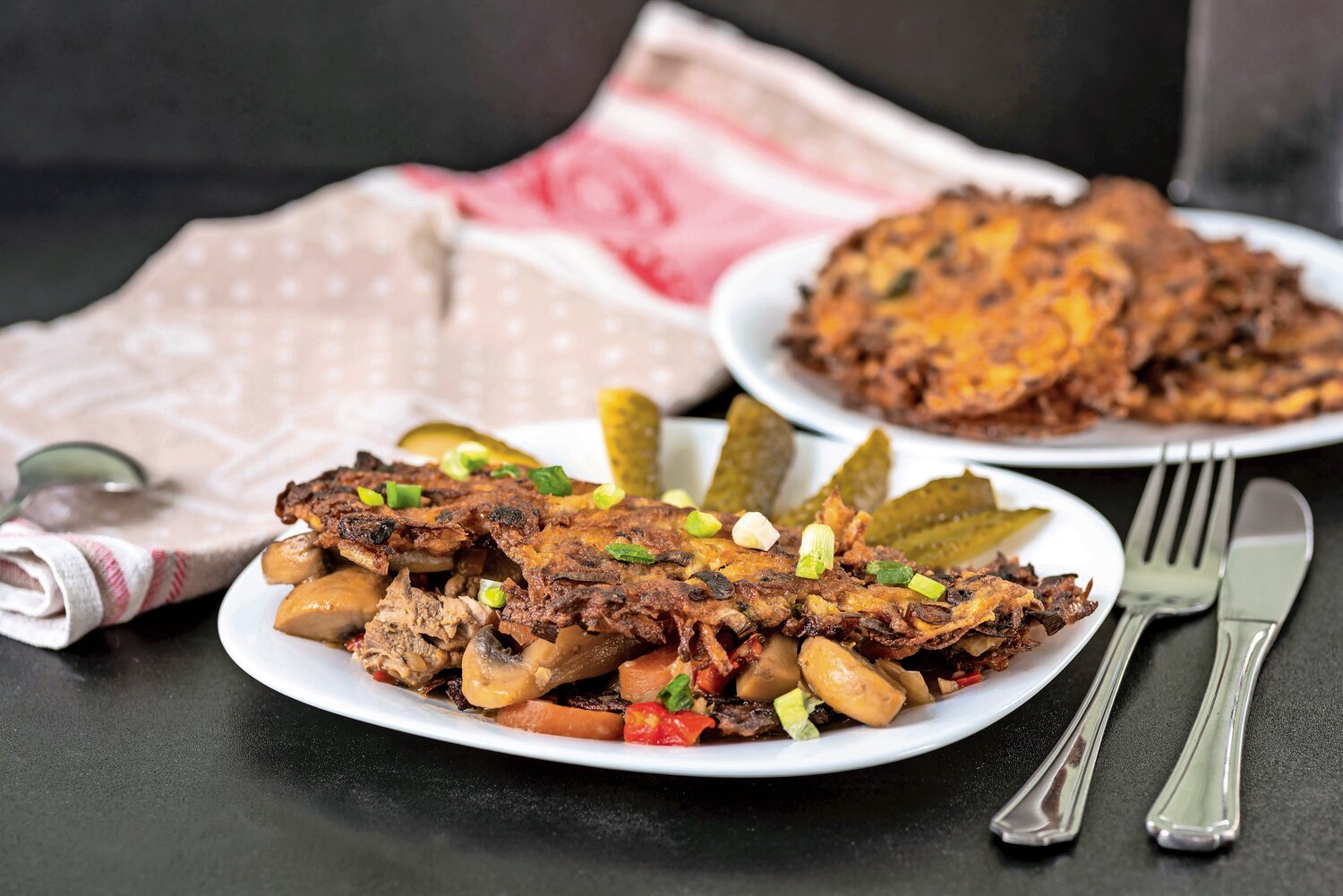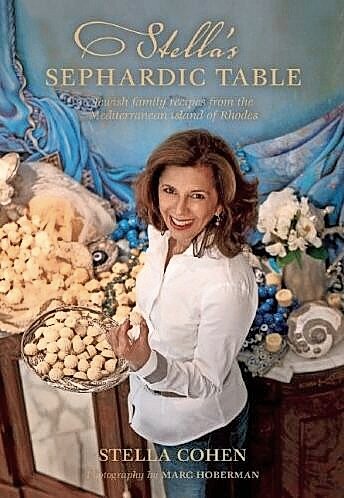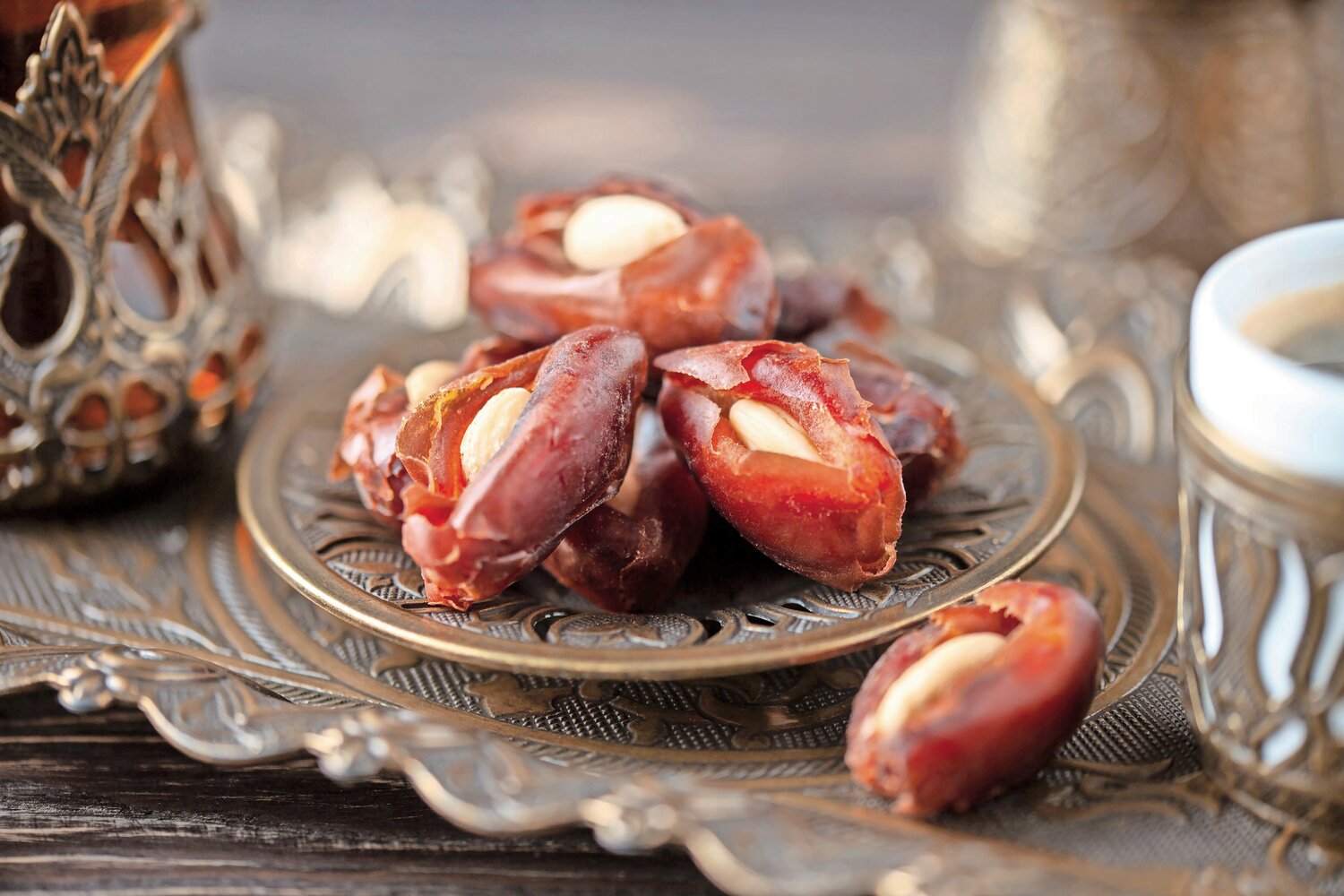Sephardic and Persian inspirations for Purim
Once upon a time, Achashverosh, the King of Persia, had his wife Vashti killed for failing to attend a banquet. Then he chose a beautiful Jewish woman named Esther to be his new Queen. He also appointed a man named Haman his chief adviser. BIG mistake! We know the rest of the story and we all know that good triumphed over evil and that women are … well … able to fix things.
The story of Queen Esther and the other characters in the Purim tale takes place in Persia, an ancient country that now is mostly Iran but also incorporates parts of what is now Iraq and Turkey. Esther is buried there, in Iran, next to her cousin Mordechai, in a part of the world that was once a thriving center of Jewish culture.
Persia was home to many Jews from pre-biblical times right up to today. At one point in the 20th century close to a million Jews lived in Iran. When Israel became a state, many Persians emigrated there. After the Iranian revolution in 1979, most of the last 150,000 Iranian Jews also left and many came to the US, broadening and enriching the American Jewish landscape.
As of 2021, Iran had about 9,826 Jews. Some say life there is OK, others complain bitterly about discrimination. There are still several synagogues there, but they exist in secret corners and basements, and many Iranian Jews are crypto-Jews and have been for generations.
While the Jewish populations of these countries have dwindled, some Jews remain and many retain their commitment to food traditions that are unique to their culture. I thought I would share a few Persian, Iranian, and Turkish recipes with you as we think about the Purim story and the place where it happened.
• • •
Persian Crusty Spicy Rice (Pareve or Meat)
Adapted from “The World of Jewish Cooking” by Gil Marks (Simon & Schuster)
3 cups long grain rice
Water to cover rice, about 1-2 quarts
8 cups water (for cooking)
1 tsp. to 1 Tbsp. salt, or to taste
6 Tbsp. canola oil, divided
2 medium onions, thinly sliced
3 Tbsp. chicken stock, vegetable stock, or water
1/4 tsp. ground turmeric
1 clove garlic, crushed
1/2 tsp. White pepper
2 Tbsp. additional vegetable oil
Rinse the rice. Place in a large bowl and fill with enough cold water to cover the rice. Soak overnight. Drain and rinse with cold water.
Bring 8 cups of water to a boil. Add the salt and the rice and cook over medium heat for 10 minutes. Stir occasionally to prevent sticking. Drain and rinse under cold running water.
Heat 2 tablespoons of the oil in a large saucepan over medium heat. Place the onion slices in the oil and leave alone while they brown. Add more oil if necessary. When very deep golden, remove to a plate. Add 2 more tablespoons of oil to the pan then add the broth and the spices and stir.
Add the cooked rice slowly by spoonfuls, creating a mound of rice in the center and space surrounding the mound. Using the handle of a long spoon, poke a single hole in the mountain of rice that goes to the pan bottom. Drizzle the remaining oil into the hole and around the base of the rice mound. Drape several paper towels or napkins over the top of the rice and cover with a lid. Cook over medium heat until you see some steam.
Reduce heat to low, and simmer until the rice is tender and the bottom is crisp. It takes between 20 and 60 minutes, depending on the amount of liquid that the rice has absorbed. A cloud of steam will escape when you lift the lid, so be careful. This will indicate that the rice is ready. You will also see a deep crusty bottom to the rice pyramid. To remove the crusty rice easily, let the pan cool for several minutes, fill the sink with about 2 inches of cold water and place the covered pot in the water. Let it sit for about 5 minutes.
Remove the paper towels. Spoon the loose rice onto a platter, and lift the crusty part with a fork and spoon. Place the crusty part on top of the rice and garnish with the golden onion slices. Break up the crusty “Tahdig” as you serve the rice.
• • •
Leek and Potato Pancakes (Pareve)
This is an Iranian recipe that is used year-round, but can also be used for Passover which is just around the corner.
6 leeks, white and light green parts only
1-1/2 cups mashed potatoes, seasoned with salt and pepper
1/2 cup snipped fresh chives
3 eggs
1/3 cup matzo cake meal
1 tsp. salt, or to taste
1/4 tsp. white pepper, or to taste
vegetable oil for frying
Clean leeks thoroughly and cut into thin slices. Place in a saucepan with just enough water to cover, and bring to a boil. Cover and cook over medium/low heat for about 30 minutes or until the leeks are very tender. Drain and cool.
Squeeze out all the excess water from the cooled leeks. In a medium bowl, combine the leeks, potatoes, chives, eggs, matzo cake meal, salt and pepper. Mix well. Let sit for about 5 minutes. Heat about 1/2 inch of oil in a frying pan over medium high heat. Drop by spoonfuls into the oil and flatten into patty shapes with the back of a spoon. Fry about 3-5 minutes on each side until golden brown. Turn and fry on the other side. Drain on paper towels and serve hot.
Variations: Sauté 1 cup chopped onions OR 1 cup chopped shallots OR 1 cup chopped mushrooms (drain well after cooking) until golden. Add to the leek/potato mixture. Fry as above.
• • •
Stuffed Dates (Pareve)
Stuffed dates are a traditional Persian treat for Purim. They are easy to make and even the littlest fingers can help.
1 box or container pitted dates
1 package almonds
*1 cup sugar syrup
1 package apricots (optional)
1 cup raisins (optional)
*To make sugar syrup, mix 2 cups of sugar, 1 cup of water and 2 teaspoons lemon juice in a heavy 1-quart saucepan. Stirring frequently, bring to a boil over medium high heat. Reduce the heat to medium-low and simmer until the syrup is bubbly and clear and looks “syrupy.” Cool and refrigerate.
The easiest version of this is to take an almond and place it in the hole in the pitted date. To make it a bit more creative, dip the almond in the cooled sugar syrup and then place it in the hole of the date. To be even more creative, add a sliver of dried apricot on each side of the date.
You can also add one raisin. Be creative and ask the kids what they would like to put in the date. Almond paste? Almond butter and raisins? Chocolate chips? Pretzels? Some halvah? Let them choose, stuff the dates, and have fun!
• • •
Coffee Toffee Crunch Bars (Dairy)
These also freeze well and can be made in advance.
2 cups unbleached flour
3/4 tsp. baking powder
Pinch salt
1 cup unsalted butter, softened
1-1/3 cups dark brown sugar, firmly packed
2 Tbsp. Instant espresso powder
1-1/2 tsp. pure vanilla extract
1 cup semi or bittersweet chocolate chips, chunks or chopped chocolate
1/2 cup toffee candy or toffee bits
1/2 cup sliced almonds
OPTIONAL: 3 to 4 ounces melted chocolate.
Preheat the oven to 325. Place flour, baking powder and salt in a bowl and whisk. Set aside.
Place the butter, sugar, and vanilla in the bowl of an electric mixer and beat until light and fluffy, about 2 minutes. Add espresso powder and beat 1 minute, scraping bowl as needed.
Add flour mixture in thirds, beating on low after each addition, just until blended. Scrape bowl as needed. Remove bowl from stand and stir in chips, bits, and almonds.
Use clean hands and spread the dough into a 12-inch square onto a large, ungreased, rimmed baking sheet. Prick thoroughly with a fork. Bake until edges look golden, about 30-50 minutes. Remove from oven and carefully cut into 48 pieces. If desired, drizzle with melted chocolate. Transfer to a rack or plate to cool. Makes 48.
• • •
Cookie-Based Chocolate Truffles or Truffle Pops (Pareve)
8 ounces pareve vanilla or chocolate tea biscuits,
1/2 cup plus 2 Tbsp. unsweetened cocoa powder
3/4 cup sugar
2 tsp. pure vanilla extract
1/2 stick pareve, trans-fat-free margarine
1/2 to 2/3 cup water
OPTIONAL: 1/2 cup peanut butter and an additional 2 ounces ground cookies and 1/3 cup brown sugar
OPTIONAL: To make a Hidden food, you can insert an almond, or some other candies into the cocoa balls. M&Ms are fun but will make these Dairy unless you use pareve coated candies.
COATINGS: 2/3 to 3/4 cup pareve mini chocolate chips, chopped white chocolate, finely chopped nuts, pareve sprinkles, melted pareve chocolate.
Place the cookies in the bowl of a food processor and process until fine crumbs form. Add the cocoa powder, sugar, vanilla, and margarine. Process until pea sized pieces form. Add the water, starting with 1/2 cup, and process until a smooth dough forms that pulls away from the sides of the bowl. Add more water only as needed to reach the proper consistency. You should be able to form a small ball that holds its shape. If it is much too soft, add a bit more cocoa and some ground cookies. Mix again.
Scrape the dough into a bowl and smooth the top. Use a tablespoon size cookie scoop and form them into balls. Place on a parchment lined, rimmed cookie sheet until all the dough is formed into balls.
If using melted chocolate, melt the chocolate and then mix until cooled to about 98 degrees. Quickly dip the cookie ball and place on parchment lined rimmed baking sheet. Place in the refrigerator until firm, about 10 minutes.
If using other topping, place each one in a separate bowl and gently roll each ball in the desired topping. Press gently to ensure that the toppings stick. Place the coated balls on a prepared baking sheet and let set. You can add lollipop sticks or just serve them as is on a plate. Makes about 20 cookie balls.
• • •
Sally’s Baking Addiction
Almond and Spice Filled, Honey-drenched Cookies-Travados (Pareve)
This recipe and picture are from my dear friend Stella Hanan Cohen who has written one of the most beautiful and delicious cookbooks I am honored to own, “Stella’s Sephardic Table”, from which this recipe was taken with her permission. Stella lives in Zimbabwe, once Rhodesia, and her book tells that story along with her magnificent art and delectable recipes.
Try these super easy to make crunchy delights. You may prefer to enjoy the travados without the syrup as my son does — simply dust with confectioner’s sugar. Either way these scrumptious cookies keep for weeks! Stella
FILLING:
9 oz (250g) unblanched ground almonds, lightly toasted
1 Tbsp fresh orange juice
1/2 cup clear honey
1 Tbsp brandy, preferably Greek Metaxa
1/2 tsp. ground cinnamon
1/4 tsp. ground cloves
1 heaped Tbsp sesame seeds, lightly toasted
TRAVADOS:
1/2 cup olive oil
1/2 cup vegetable oil
1/2 cup superfine (caster) sugar
3/4 cup fresh orange juice
2-3/4 cups cake flour, as needed
*1/2 cup fine semolina
1 tsp. baking powder
1/2 tsp. baking soda
SYRUP:
1/2 cup sugar
1 cup clear honey
1/2 cup water
1- inch (2.5cm) strip orange zest
1 tsp. fresh orange juice
1 tsp. orange blossom water
1/2 cup toasted sesame seeds (or ground unblanched almonds), for topping
In a bowl mix the filling ingredients to a paste. Shape the paste into about .65oz (10g) ovals on a plate. Set aside. In a medium bowl add the flour, semolina, and baking powder.
In another large bowl add the olive and vegetable oil, sugar, orange juice and mix. Add the baking soda and whisk immediately for 5 seconds until the ingredients combine and the baking soda dissolves and starts to foam.
Add the flour mixture to the wet ingredients, kneading the dough lightly to combine with your hands to form a soft pliable dough. Do not overwork the dough. Pinch portions of dough (0.63oz/18g) and shape into balls then place on a platter.
Preheat the oven to 350°F (180°C). Line two baking trays with baking paper (parchment).
Shape the travados:
Flatten each ball between your palms to make discs about ⅛ in (3mm) thick. Place each disc on a work surface and create a decorative pattern by gently pressing the tines of a fork on one side of the pastry*. Turn the discs over and place 1 oval (teaspoon) of the filling in the center. Fold the dough over the filling pressing the edges with your fingers to seal and curve the pastries slightly into half-moon crescent shapes. Repeat with the remaining dough and filling*.
Place the travados on the prepared baking tray, mounded side up, 1in (2cm) apart and bake for 20 minutes or until golden brown. Cool travados on wire racks.
While the travados are baking, make the syrup:
Bring the sugar, honey and water in a small pan to a boil. Add the orange zest and simmer for 5 minutes. Add the orange juice and orange blossom water, simmer until syrup has thickened slightly and the short-thread stage is reached**. Remove the pan with the syrup from the heat. Discard the orange zest.
Gently drop the cooled travados into the hot syrup a few at a time for about 1
minute to soak through into the syrup. With a slotted spoon, scoop them out and place onto a serving dish. Sprinkle with sesame seeds (or coat with ground almonds).
*Stella’s Hint: Alternatively, you can use a total of 3-1/4 cups cake flour and skip the semolina
**Short-thread stage: At this stage, the hot syrup is thick and sticky. Test it by placing a small amount onto a teaspoon. Dip wetted thumb and index finger in the syrup and pull them apart a couple of times to see if threads of about 1/2 -inch (1.5cm) in length form.
Twist on Tradition: *Alternatively, with a rolling pin flatten each ball, place filling in the center, fold the dough over as above. With a crimper or tweezer create a raised decorative design on the filled travados.

 44.0°,
Mostly Cloudy
44.0°,
Mostly Cloudy 













